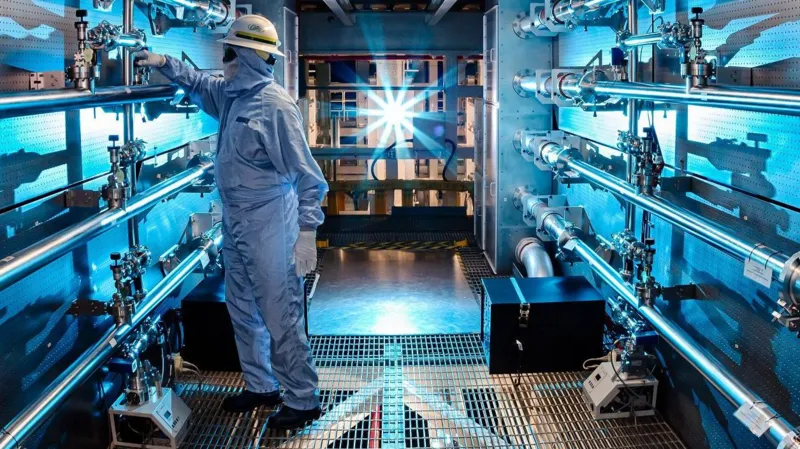In the 1980s, beneath the Nevada desert, the US conducted secret experiments into nuclear fusion, the process that powers the sun. These experiments, aimed at achieving controlled nuclear fusion on Earth, were classified but produced promising results. This sparked the interest of two young researchers, Connor Galloway and Alexander Valleys, who later started a company focused on harnessing fusion power.
Fusion breakthrough
Nuclear fusion, the process of releasing vast amounts of energy by combining hydrogen nuclei, has long been seen as the key to a future of unlimited, clean energy. Unlike nuclear fission, which powers current nuclear reactors and generates long-lived radioactive waste, fusion produces helium and minimal radioactive byproducts. If successfully harnessed, it could provide abundant energy without any CO2 emissions.
In 2022, scientists at the National Ignition Facility (NIF) in California achieved a significant milestone. They succeeded in producing more energy from the fusion reaction than was used by the lasers that initiated it. This breakthrough was the result of more than a decade of effort and was a major step in the pursuit of practical fusion energy.
The Arrival of Xcimer
Inspired by NIF’s achievements, Conor Galloway and Alexander Vallis founded a company called Xcimer, based in Denver, with the goal of further advancing fusion technology. Their focus is on using more powerful lasers to ignite fusion reactions. While NIF’s lasers produced two megajoules of energy, Xcimer’s goal is to develop lasers that can deliver up to 20 megajoules of energy.
Galloway and Vallis believe that lasers delivering 10 to 12 megajoules of energy would be optimal for a commercial fusion power plant. Their approach involves directing energy equivalent to that of a 40-ton truck traveling at 60 miles per hour onto a small fuel capsule. This powerful burst of energy will ignite the fusion reaction, producing a considerable amount of heat.
Challenges and innovations
Fusion research faces many challenges, both technical and engineering-related. One major hurdle is how to efficiently extract the heat produced by the fusion reaction to create electricity. While Xcimer plans to use a “waterfall” of molten salt to absorb and transfer the heat, this solution is still in development.
Another issue is managing the high-energy particles produced by fusion, which can degrade reactor materials. Xcimer’s solution involves designing a system that maintains a constant flow of molten salt to prevent damage to the reactor while allowing for frequent replacement of fuel capsules.
Despite these obstacles, Galloway and Valles are optimistic. They plan to test their laser system for two years before building a target chamber for precise experiments. Their goal is to build a working fusion reactor connected to the power grid by the mid-2030s.
Funding and future prospects
Xcimer has already raised $100 million for its initial research and facility construction. However, the project’s future success will require hundreds of millions more. According to Galloway and Vallies, the potential for cheap, carbon-free electricity makes the investment worthwhile.
For them, the promise of fusion power represents a transformational opportunity for humanity. If successful, their work could revolutionise energy production and significantly reduce global CO2 emissions.
Skepticism and realism
Despite the excitement around fusion research, some experts are skeptical about its near-term viability. Professor Ian Lowe of Griffith University, who has worked extensively in energy research, believes even the most optimistic estimates suggest commercial fusion reactors may not be available until 2050 or later. They argue that urgent action is needed to address climate change, and that waiting for fusion power could delay efforts needed to decarbonise the energy supply.
Conclusion
As researchers like Galloway and Vallis continue to push the boundaries of fusion technology, the prospect of a clean, virtually unlimited energy source is becoming more tangible. While there are significant technical and engineering challenges ahead, the progress made so far and the innovative approaches being explored offer hope for a future powered by fusion. If successful, fusion could not only provide a solution to the world’s energy needs, but also play a key role in tackling climate change.
